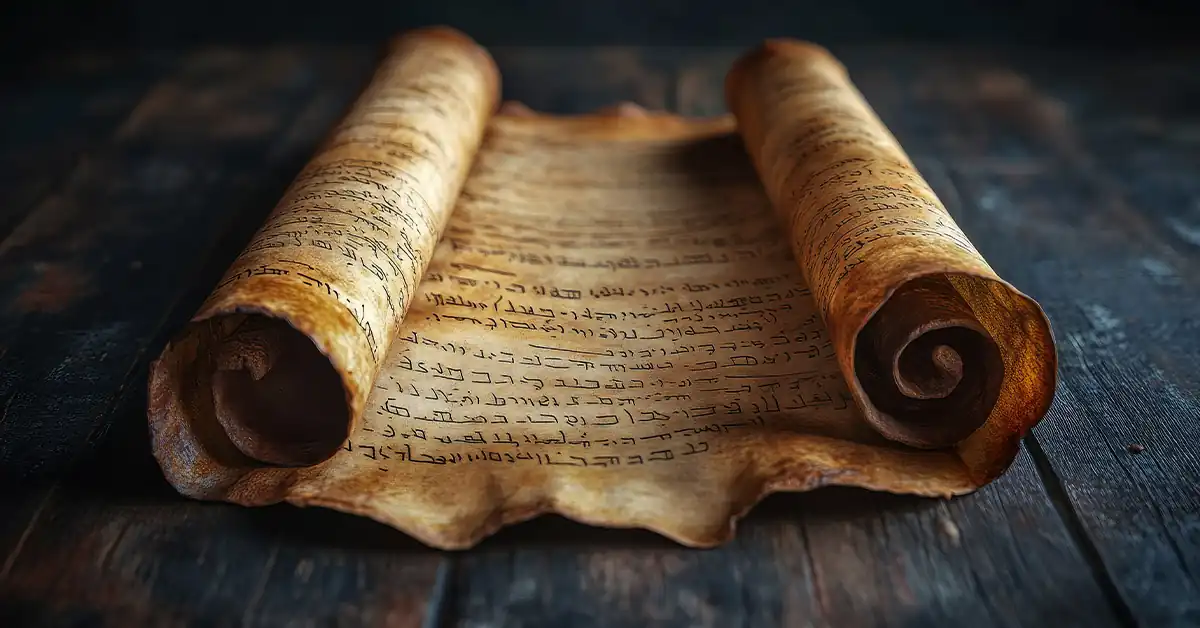Old Testament Universal Reconciliation Pt 2

Does the Old Testament Teach Universal Reconciliation?
The Old Testament’s own pattern is clear: God judges, then God restores. Not only Israel, but enemy nations, and even the archetype of final judgment itself—Sodom. The Scriptures push past the New Jerusalem and the Lake of Fire horizon to a future where death is removed, Sheol is raided, and all flesh comes to worship. Eternal punishment, as presented by fear-based systems, collapses under the Bible’s larger testimony. The Old Testament agrees with the hope later clarified in the New Testament and vindicates Universal Reconciliation.
The Hinge Case: Sodom’s “Eternal Fire” and Promised Restoration
This is the foundational precedent that exposes the error of interpreting “eternal fire” as endless conscious torment or annihilation.
1) The New Testament sets Sodom out as the model of decisive judgment
“Sodom and Gomorrah and the surrounding cities, which likewise indulged in sexual immorality and pursued unnatural desire, serve as an example by undergoing a punishment of eternal fire” (Jude 7).
“By turning the cities of Sodom and Gomorrah to ashes he condemned them to extinction, making them an example of what is going to happen to the ungodly” (2 Peter 2:6).
These are often weaponized by defenders of eternal punishment. But what does the Old Testament say?
2) The Old Testament promises Sodom’s future restoration
“Yet I will restore the fortunes of Sodom and her daughters and of Samaria and her daughters, and I will restore your fortunes along with them” (Ezekiel 16:53).
“As for your sisters, Sodom and her daughters shall return to their former state… and you and your daughters shall return to your former state” (Ezekiel 16:55).
This is direct, explicit, and future-oriented. It cannot be explained away or spiritualized. The very city that suffered “eternal fire” is promised a return.
3) Jesus leaves the door of mercy open, even in judgment language
“If the mighty works done in you had been done in Sodom, it would have remained until this day. But I tell you that it will be more tolerable on the day of judgment for the land of Sodom than for you” (Matthew 11:23–24).
“More tolerable” implies degrees of judgment, not finality. Jesus confirms that Sodom’s judgment was not the end.
Conclusion from the hinge case
If Sodom:
- suffered “eternal fire” (Jude 7),
- was turned to ashes and held up as an example (2 Peter 2:6),
- and yet is promised future restoration (Ezekiel 16:53–55),
Then the entire premise of “eternal punishment” being final is shattered. The Bible itself demonstrates that God’s judgments are restorative, not retributive.
Beyond the Lake of Fire and New Jerusalem: The Old Testament’s Wider Horizon
The prophetic vision doesn’t stop at destruction or judgment. It pushes past it—to resurrection, healing, and universal worship.
1) Death is swallowed for all peoples
“On this mountain the Lord of hosts will make for all peoples a feast of rich food… And he will swallow up on this mountain the covering that is cast over all peoples… He will swallow up death forever, and the Lord God will wipe away tears from all faces” (Isaiah 25:6–8).
If death is swallowed up for all peoples, then the second death cannot be permanent or final. The fire leads to feasting.
2) Every knee, every tongue, universal allegiance
“Turn to me and be saved, all the ends of the earth! For I am God, and there is no other. To me every knee shall bow, every tongue shall swear allegiance” (Isaiah 45:22–23).
The bowing is not forced submission. It is covenantal allegiance.
3) New creation worship by all flesh
“From new moon to new moon, and from Sabbath to Sabbath, all flesh shall come to worship before me, declares the Lord” (Isaiah 66:23).
The context is new heavens and new earth. The participants are all flesh. The location is God’s presence. There are no outsiders.
4) Rescue beyond Sheol, the grave undone
“God will ransom my soul from the power of Sheol, for he will receive me” (Psalm 49:15).
“You have delivered my soul from the depths of Sheol” (Psalm 86:13).
“I shall ransom them from the power of Sheol; I shall redeem them from Death. O Death, where are your plagues? O Sheol, where is your sting?” (Hosea 13:14).
“Your dead shall live; their bodies shall rise. You who dwell in the dust, awake and sing for joy” (Isaiah 26:19).
This is victory after death, not victory through avoidance. Sheol is not the end.
Nations Judged, Then Healed: Enemies Become Family
The judgment of nations always ends with an unexpected promise: restoration.
1) Egypt, Assyria, and Israel together as one blessing
“The Lord will strike Egypt, striking and healing, and they will return to the Lord, and he will listen to their pleas for mercy and heal them” (Isaiah 19:22).
“In that day there will be a highway from Egypt to Assyria… the Egyptians will worship with the Assyrians” (Isaiah 19:23).
“Blessed be Egypt my people, and Assyria the work of my hands, and Israel my inheritance” (Isaiah 19:25).
Three once-hostile empires are unified in worship.
2) Moab, Ammon, Elam restored “in the latter days”
Moab: “I will restore the fortunes of Moab in the latter days” (Jeremiah 48:47).
Ammon: “Afterward I will restore the fortunes of the Ammonites, declares the Lord” (Jeremiah 49:6).
Elam: “In the latter days I will restore the fortunes of Elam, declares the Lord” (Jeremiah 49:39).
God’s judgment of these nations was never the last word.
3) All nations stream to Zion for instruction and peace
“It shall come to pass in the latter days… all nations shall flow to it, and many peoples shall come, and say: Come, let us go up to the mountain of the Lord… He shall judge between the nations, and they shall beat their swords into plowshares” (Isaiah 2:2–4).
This is not political peace. It is redemptive transformation.
The Old Testament Pattern that Refutes ECT and Annihilationism
The pattern is undeniable:
- Judgment comes
- Wrath is poured out
- But mercy follows
This cycle repeats across prophets, books, and centuries.
“The Lord will not cast off forever, but, though he cause grief, he will have compassion according to the abundance of his steadfast love; for he does not afflict from his heart or grieve the children of men” (Lamentations 3:31–33).
Eternal torment contradicts this character.
What “Eternal” Really Means
Jude calls Sodom’s fire eternal. But Ezekiel says Sodom will be restored. That means eternal fire cannot mean endless conscious ruin. It means divine, final, age-lasting fire — God’s fire, not hellfire. The fire ends in cleansing.
God is a consuming fire, not a torturer.
The Sodom Precedent Applied to All
- If Sodom, the worst case, is restored, nothing is beyond hope.
- If Sodom’s “eternal fire” ends in mercy, so does every other fire.
- If Sodom was judged as an example, then restoration is part of that example.
This precedent validates the restoration of Moab, Ammon, Elam, and the union of Egypt and Assyria with Israel.
It shows that the prophetic arc pushes past judgment into something deeper: reconciliation for all.
Closing: The Old Testament Declares the End From the Beginning
Many have been shackled by a gospel of fear, where God destroys the majority of His creation in fire and keeps them there forever. But the Old Testament reveals a deeper truth.
- Death is swallowed up
- Tears are wiped from every face
- Nations return from wrath
- All flesh comes to worship
This is not an optional interpretation. It is the declared end from the very beginning.
God’s justice purifies, but His mercy finishes the story. And that story is Universal Reconciliation.
- 09/10/2025
- WRITE A COMMENT
Recent Posts
- The Eternal False Translation: How Aionios Was Corrupted Into Eternal
- The Rich Man and Lazarus
- Does Grace Last Forever?
- His Love Never Fails
- Love and Forgive Your Enemies
- His Mercy Endures Forever
- Scriptures That Teach Universal Reconciliation
- The Lesson of James, Peter and John
- Progressive Salvation is Biblical!
- The Gates Never Shut!


